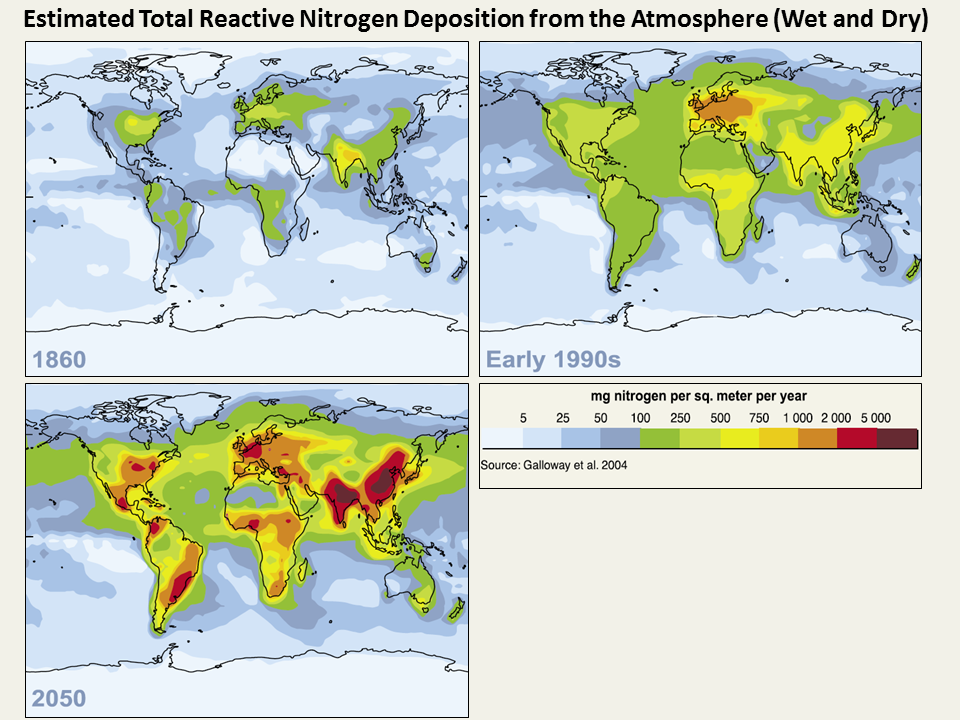Estimated Total Reactive Nitrogen deposition from the Atmosphere (Wet and Dry) 1860-2050

Over the past four decades, nutrient loading has emerged as one of the most important drivers of ecosystem change in terrestrial, freshwater, and coastal ecosystems. While the introduction of nutrients into ecosystems can have both beneficial and adverse effects, the beneficial effects will eventually reach a plateau as more nutrients are added (for example, additional inputs will not lead to further increases in crop yield), while the harmful effects will continue to grow. Synthetic production of nitrogen fertilizer has been the key driver for the remarkable increase in food production of the past 50 years. The total amount of reactive, or biologically available, nitrogen created by human activities increased ninefold between 1890 and 1990, with most of that increase taking place in the second half of the century in association with increased use of fertilizers.
More than half of all the synthetic nitrogen fertilizers ever used on Earth have been used since 1985. Humans now produce more reactive nitrogen than is produced by all natural pathways combined. Nitrogen application has increased fivefold since 1960, but as much as 50% of the nitrogen fertilizer applied may be lost to the environment. Phosphorus application has increased threefold since 1960, with steady increase until 1990, followed by leveling off at a level about equal to applications in 1980. These changes are mirrored by phosphorus accumulation in soils, which can serve as an indicator of eutrophication potential for freshwater lakes and phosphorus-sensitive estuaries. Potential consequences include eutrophication of freshwater ecosystems, hypoxia in coastal marine ecosystems, nitrous oxide emissions contributing to global climate change, and air pollution by NOx in urban areas. Occurrence of such problems varies widely in different regions.
Galloway et al., 2004
